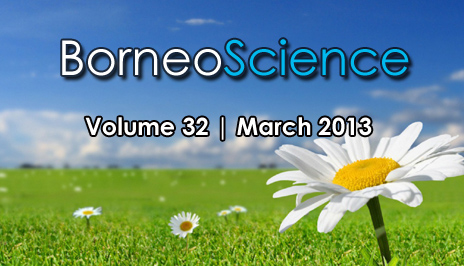ABSTRACT. The study demonstrated the effect of different flow channel length on the spinneret with respect to the ceramic hollow fiber membrane morphology. A smartly designed spinneret is utilized for the spinning process where the nozzle used can be change to different length via the use of adapters. Thus, allowing the effect of having different flow channel length to be investigated. Three spinneret adapters with different nozzle length were fabricated at 29 mm, 34 mm, and 39 mm. Ceramic hollow fiber membrane is produced using these configurations in the spinning process. Then, the micrographic cross sections of hollow fiber membranes is investigated using Scanning Electron Microscope (SEM) where it shows finger like, dense layer and damage structure morphology. Out of the samples investigated, hollow fiber membrane spun using 39 mm nozzle length produce the best concentricity. CFD simulation is initiated to study the flow behavior inside the flow channel to correlate with that of the experimental result attained.
KEYWORDS. Hollow fiber, Spinneret, Flow Channel, CFD
Download Full Paper Here (Right-Click and Save As)
REFERENCES
Bird, R. B., Armstrong, R. C., & Hassager, O. 1987. Dynamics of Polymeric Liquids, Fluid Mechanics (Volume 1). Vol. 1, 2nd ed., John Wiley and Sons.
Bonyadi, S., & Chung, T. S. 2007. Investigation of Corrugation Phenomenon in the Inner Contour of Hollow Fibers during the Non-solvent Induced Phase-separation Process, Journal of Membrane Science, 299: 200.
Chung, T. S., Teoh, S. K., Lau, W. W. Y., & Srinivasan, M. P. 1998. Effect of Shear Stress within the Spinneret on Hollow Fiber Membrane Morphology and Separation Performance. Industrial & Engineering Chemistry Research, 37: 3930.
Chung, T. S., Qin, J. J., & Gu, J. 2001. Effect of Shear Rate within the Spinneret on Morphology, Separation Performance and Mechanical Properties of Ultrafiltration Polyethersulfone Hollow Fiber Membranes. Chemical Engineering Science, 56: 5869.
John F. D., Janusz M. G., & John A. S. 2001. Fluid Mechanics. Essex, England: Pearson Education Limited.
Larson, R. G. 1992. Instabilities in Viscoelastic Flows. Rheologica Acta, 31: 213
Li, K. 2007. Ceramic Membranes for Separation and Reaction. West Sussex, England: John Willey and Sons Ltd.
Moynihan, R. H., Baird, D. G., & Ramanathan. 1990. Additional Observations on the Surface Melt Fracture Behavior of Linear Low-density Polyethylene. Journal of Non Newtonian Fluid Mechanics, 34: 255.
Nunes, S. P., & Peineman, K. 2006. Membrane Technology: in the Chemical Industry. WileyVCH.
Nijdam, W., de Jong, J., van Rijn, C. J. M., Visser, L. Versteeg, Kapantaidakis, G., Koops, H., & Wessling, M. 2005. High Performance Micro-engineered Hollow Fiber Membranes by Smart Spinneret Design. Journal of Membrane Science, 256: 209.
Otter, J. L. 1971. Some Investigations of Melt Fracture, Rheologica Acta, 10: 200. Petrie, C. J. S., & Denn, M. M. 1976. Instabilities in Polymer Processing. AIChE Journal, 22: 209.
Porter, M. C. 1990. Handbook of Industrial Membrane Technology. New Jersey, USA: Noyes.
Piau, J. M., Kissi, N. E., & Tremblay, B. 1990. Influence of Upstream Instabilities and Wall Slip on Melt Fracture and Sharkskin Phenomena during Silicones Extrusion through Orifice Dies. Journal of Non-Newtonian Fluid Mechanics, 34.
Piau, J. M., Kissi, N. E., & Tremblay, B. 1988. Low Reynolds Number Flow Visualization of Linear and Branched Silicones Upstream of Orifice Dies. Journal of Non-Newtonian Fluid Mechanics, 30 :197.
Qin, J. J., Gu, J., & Chung, T. S. 2001. Effect of Wet and Wet-jet Spinning on the Shearinduced Orientation during the Formation of Ultrafiltration Hollow Fiber Membranes. Journal of Membrane Science.
Santoso, Y. E., Chung, T. S., Wang, K. Y., & Weber, M. 2006. The Investigation of Irregularinner-Skin Morphology of Hollow Fiber Membranes at High Speed Spinning and the Solutions to Overcome It. Journal of Membrane Science, 182: 57.
Su, Y., Lipscomb, G. G., Balasubramaniam, H., & Lloyd, D. R. 2006. Observations of Recirculation in the Bore Fluid During Hollow Fiber Spinning, AIChE Journal, 52: 2072-2078.
Su, Y. 2007. Theoretical Studies of Hollow Fiber Spinning. Ph. D. Diss., College of Engineering, University of Toledo.
Wang, K. Y., Matsuura, T., Chung, T. S., & Guo, W. F. 2004. The Effects of Flow Angle and Shear Rate within the Spinneret on the Separation Performance of Poly (Ethersulfone) (PES) Ultrafiltration Hollow Fiber Membranes. Journal of Membrane Science, 240: 67.
Widjojo, N., & Chung, T. S. 2006. The Thickness and Air-gap Dependence of Macrovoid Evolution in Phase-Inversion Asymmetric Hollow Fiber Membranes. Industrial & Engineering Chemistry Research, 45: 7618.
Widjojo, N., Chung, T. S., Arifin, D. Y., Weber, M., & Warzelhan, V. 2010. Elimination of Die Swell and Instability in Hollow Fiber Spinning Process of Hyperbranched Polyethersulfone (HPES) via Novel Spinneret Designs and Precise Spinning Conditions. Chemical Engineering Journal, 163: 143-153.
Yang, Q., Chung, T. S., Chen, S. B., & Weber, M. 2008. Pioneering Explorations of Rooting causes for Morphology and Performance Differences in Hollow Fiber Kidney dialysis Membranes Spun from Linear and Hyperbranched Polyethersulfone. Journal of Membrane Science, 313: 190.
Yang, Q., Chung, T. S., Weber, M., & Wollny, K. 2009. Rheological Investigations of Linear and Hyperbranched Polyethersulfone Towards Their As-spun Phase Inversion Membranes’ Differences. Polymer, 50: 524.

